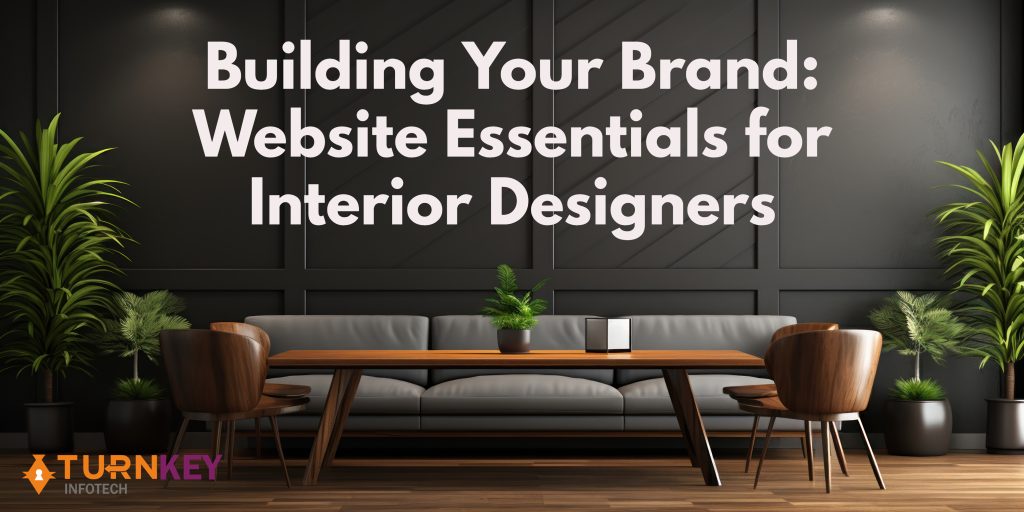Building Your Brand: Website Essentials for Interior Designers

In today’s digital-first world, a strong online presence is crucial for interior designers looking to showcase their work, attract clients, and build a memorable brand. Your website serves as your digital portfolio and a powerful marketing tool. Here are essential elements to consider when building a website that reflects your unique style and effectively communicates your brand.
1. Showcase Your Portfolio
Your portfolio is the heart of your website. Potential clients want to see your design style, creativity, and the quality of your work. Here are some tips for creating an impressive portfolio:
- High-Quality Images: Invest in professional photography to capture your completed projects. Bright, well-composed images highlight your designs and create a lasting impression.
- Diverse Projects: Showcase a variety of projects that reflect your range. Include different styles, room types, and scales to appeal to a broader audience.
- Before-and-After Shots: These visuals not only highlight your design skills but also demonstrate the transformative power of your work.
2. Craft a Compelling About Page
Your “About” page is a chance to tell your story. Share your journey, design philosophy, and what sets you apart from other interior designers. Make it personal and relatable. Here are a few things to include:
- Your Background: Briefly share your education and experience in the field.
- Your Design Philosophy: Explain what inspires you and how you approach design projects.
- Personal Touch: Consider adding a few fun facts about yourself to help potential clients connect with you on a personal level.
3. Include Client Testimonials
Testimonials add credibility and trustworthiness to your brand. Encourage past clients to provide feedback on their experiences working with you. Consider these approaches:
- Showcase Quotes: Feature standout quotes prominently on your homepage or a dedicated testimonials page.
- Video Testimonials: A brief video of satisfied clients sharing their experiences can be even more impactful.
- Project Stories: Pair testimonials with images of the projects they’re referencing to create a compelling narrative.
4. Create a Blog or Resources Section
A blog is a fantastic way to demonstrate your expertise and connect with your audience. Regularly publishing articles can enhance your SEO and keep visitors engaged. Consider the following topics:
- Design Tips and Trends: Share insights on current design trends, tips for styling spaces, or DIY projects.
- Project Highlights: Write detailed posts about your recent projects, explaining your design process and the challenges you overcame.
- Industry News: Share news about the interior design industry, new materials, or innovative products that excite you.
5. Design for User Experience (UX)
A well-designed website not only looks good but also provides a seamless user experience. Keep these principles in mind:
- Mobile Responsiveness: Ensure your website is optimized for mobile devices. Many users will visit your site from their phones or tablets.
- Easy Navigation: Use a simple menu structure that makes it easy for visitors to find what they’re looking for.
- Fast Loading Times: Optimize images and streamline your site to minimize loading times. A slow website can deter potential clients.
6. Incorporate Strong Calls to Action (CTAs)
Your website should guide visitors toward taking action, whether that’s contacting you for a consultation or signing up for your newsletter. Effective CTAs might include:
- Contact Forms: Make it easy for potential clients to reach out by including contact forms on your website.
- Newsletter Sign-Up: Encourage visitors to subscribe for updates, design tips, and exclusive offers.
- Social Media Links: Direct visitors to your social media profiles where they can see more of your work and connect with you.
7. Optimize for SEO
Search engine optimization (SEO) is crucial for making your website discoverable. Here are some SEO basics to implement:
- Keyword Research: Identify relevant keywords that potential clients might use to find interior designers. Use these keywords naturally throughout your website.
- Meta Descriptions: Write clear and compelling meta descriptions for each page to improve your click-through rate from search engines.
- Alt Text for Images: Use descriptive alt text for images to improve accessibility and enhance your site’s SEO.
Conclusion
Building a strong brand as an interior designer begins with a well-crafted website. By showcasing your portfolio, telling your story, and providing valuable resources, you can create an engaging online presence that attracts clients and reflects your unique design style. Remember to keep user experience and SEO in mind to ensure your website reaches the right audience. Start building your brand today, and watch your design business flourish!